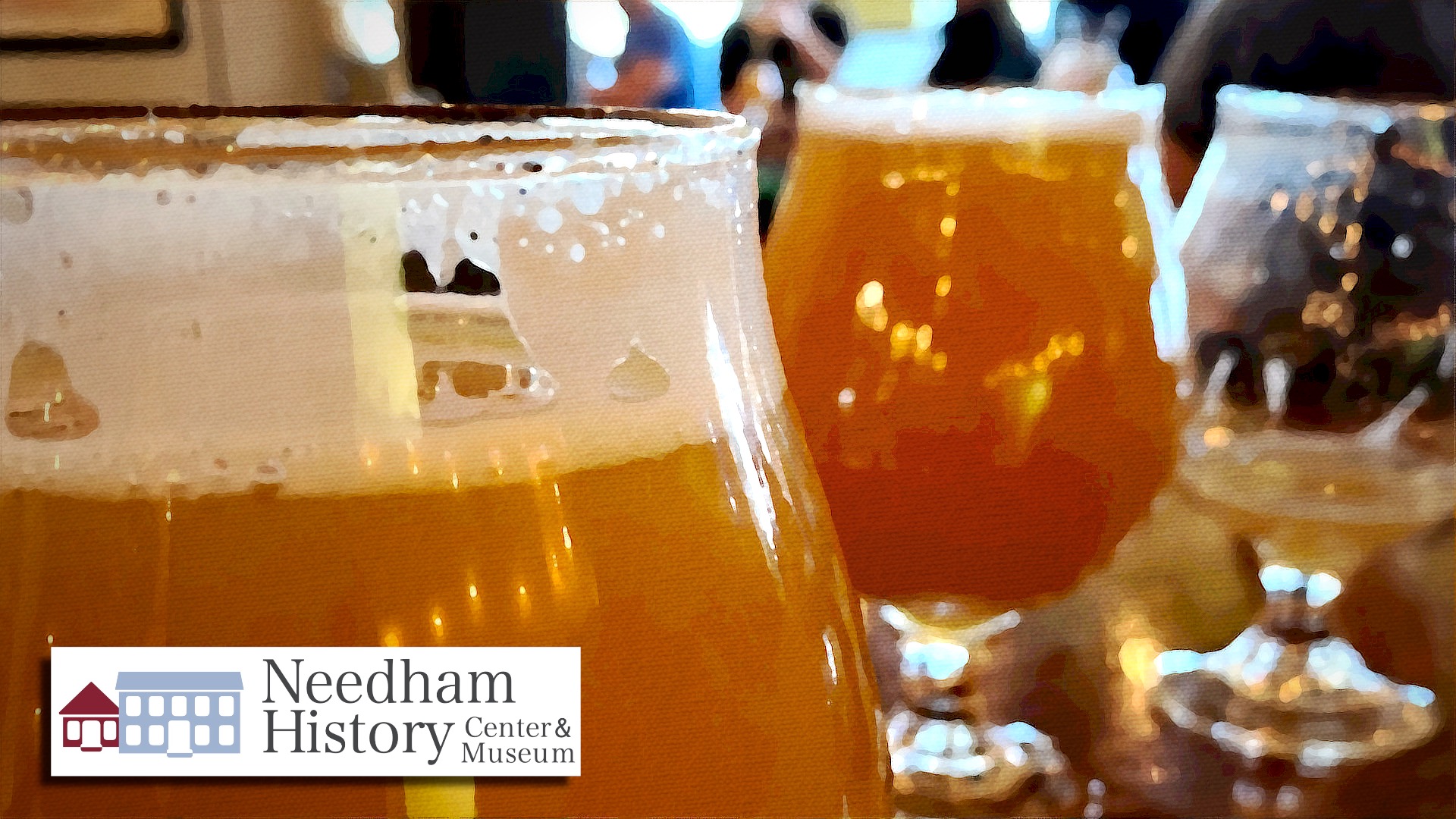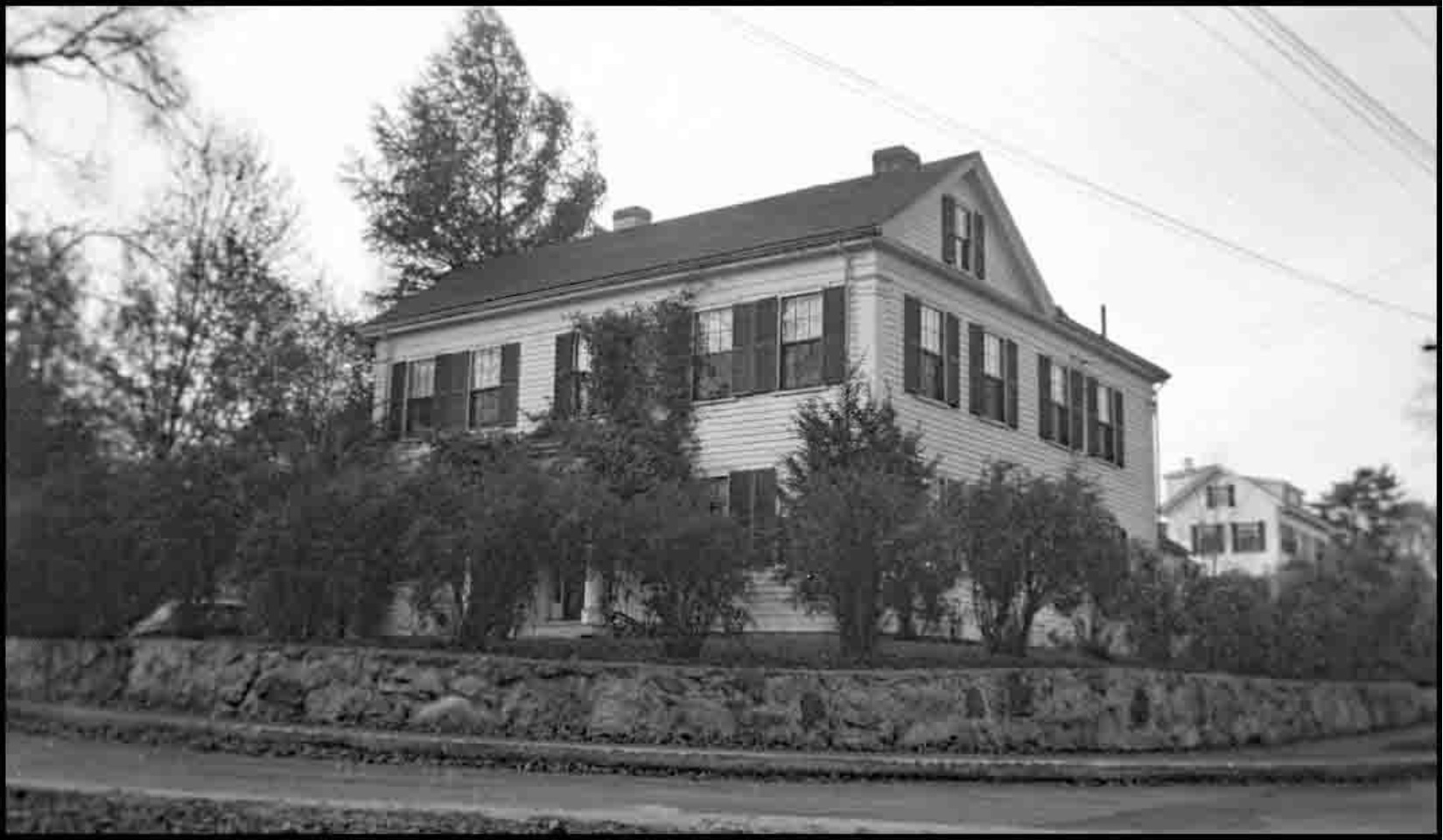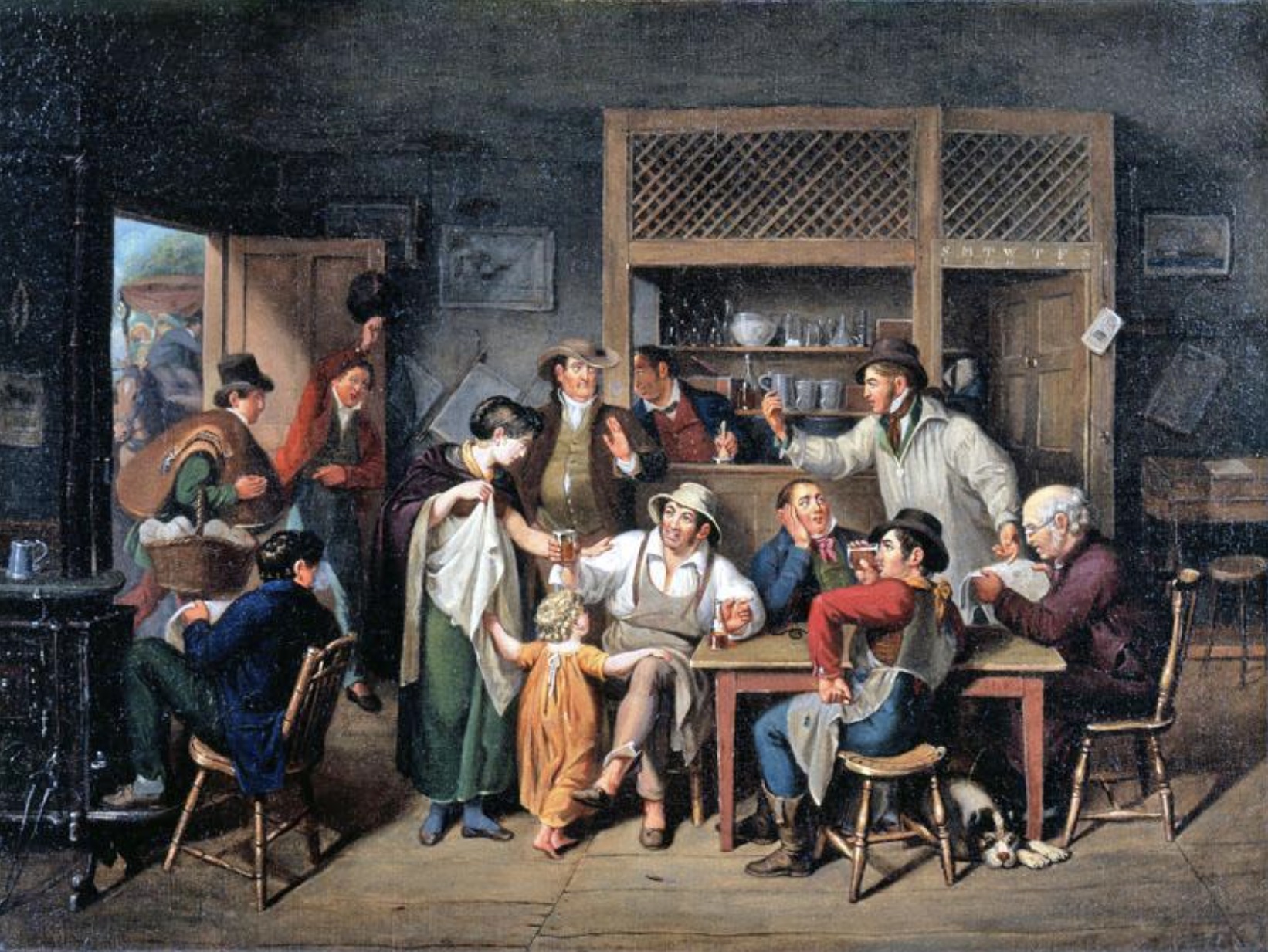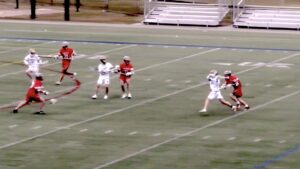
Needham History: One More for the Road
It became increasingly common for Town Meeting to adjourn early in the day, and resume the meeting later at one of the town’s taverns.

The Ezra Fuller, Jr. House (1849), on the the NW corner of Great Plain and Central Avenues. This was the site of the former McIntosh Tavern, which burned down in 1844. Parts of the original house survived and were incorporated into the current house.
One More for the Road
or, Two Stories that Explain Everything, and Nothing
The lovely house at the northwest corner of Great Plain and Central Avenues bears a sign identifying it as the “McIntosh Tavern Site.” The tavern itself, both its commerce and its building, are long gone. The sign, however, reminds us of a time when this corner was the center of Needham life.
The tavern was established sometime after 1800 by Maj. Ebenezer McIntosh, a son of Needham’s Revolutionary War hero, Col. William McIntosh. William himself also kept an “open house” in the years just after the War. The tavern made its own beer and ale (most households did), but it was also licensed to sell distilled spirits (which were regulated and, of course, taxed).
As a public house and inn, the tavern was located at the intersection of the coach roads to accommodate travelers. Great Plain and Central were on the main east-west and north- south travel routes to the larger towns – Boston, Dedham, Worcester – as well as to the towns in the interior. Inns were the only places where travelers could find a meal and a bed along the way, and the inns and coaches often worked together.
McIntosh’s Tavern, like any good pub, was the town’s social gathering place. Travelers were not only a source of income, but they also brought the latest information, so the tavern was the hub of local news and gossip. It was also one of the only large rooms in town, so it became a meeting place for town activities, public meetings, sales, and lectures. The large tavern hall could hold many people, and was ideal for Selectmen’s meetings and Coroner’s juries. In the later 1700s, it became increasingly common for Town Meeting to adjourn early in the day, and resume the meeting later at one or another of the town’s taverns (“And it has been said,” Needham historian George Kuhn Clarke remarked, “that the change was not made in the interest of good government.”). The Town paid the charges for candles, liquor, etc.
Bankruptcy auctions were held at the taverns, with the person’s goods being sold to meet his debts. Similarly, the goods of deceased paupers were sold at auction to recoup the poorhouse expenses. In November 1785, an auction was held at Col. McIntosh’s tavern to sell the goods of Mr. Walter Logan (described in the census of 1777 as “Walter Logan, Esq. of Roxbury, refugee”). The well-worn items mostly went for a few shillings each, though some of the better items (including a down featherbed and a black walnut desk) were held out for private sale and brought in more than 20 pounds.
The Tax Collector used the taverns as his headquarters, since they were central and well- known locations; at tax time, he would make the rounds of the taverns to collect payments. Itinerant craftsmen also often used the taverns as their temporary offices. When Mr. Talbot, the first photographer to take daguerreotype portraits in Needham, was in town in 1842, he stayed at the inn and took his orders in the tavern hall.
Taverns were also the locations for happier occasions, such as social events and dances. Old-timers in the 19th century could remember when the cotillion was two rows of young people extending the entire length of the hall (group dancing only in those days – think Jane Austen).
McIntosh’s tavern was not the only pub in town. The first record of a tavern dates to 1705, when Benjamin Mills was licensed to sell liquor from his public house in Lower Falls. Judge Samuel Sewall, in his famous Diary, mentions Mills’ tavern as a place where “the Royal Governors, and other dignitaries. were wont to refresh themselves when journeying to the inland towns of the province.” Town records note that in 1755 the county renewed the license of Samuel Richards, “Innholder, of Needham.” Ephraim Bullard kept a tavern in the western part of town (near what is now the gate into Wellesley College), and this is where the West Needham Militia assembled on 19 April 1775. There were numerous other licensed houses in Needham in the 18th and 19th centuries.
The taverns were important community places, but not without their problems. In 1732, Town meeting voted on (and defeated) a request to allow the town to license three more taverns, but this resolve clearly did not last long since the number of taverns continued to grow. However, in 1785 Town meeting admonished the Selectmen and Constables to be more diligent in enforcing the laws “Respecting those Persons that Spend their time and Interest Unneccesarily at Taverns, or elsewhere.” Again in 1791, the constables were urged to discourage “Idlers and tavern-haunters.” Also in 1829. And once again in 1837.
The rise of Temperance sentiment in the 1840s diminished the community importance of the taverns. It was no longer deemed proper for town business and tax collections to take place there, and public business was moved to stores or meeting halls. The growth of railroads at this time limited the coach traffic, so their function as inns began to fall off as well.
McIntosh’s Tavern remained in business until the early 1840s. The building burned down in 1844, and the current house was built in 1849 as a house and general store. The chimney block and hearths survived the fire and were incorporated into the rebuilt house, which still stands on this corner.
Village Tavern (1813) by John Lewis Krimmel (American, 1786-1821) shows a typical scene in a rural coaching tavern in the early 1800s.
 |
Gloria Polizzotti Greis is the Executive Director of the Needham History Center & Museum. For more information, please see their website at www.needhamhistory.org. |

